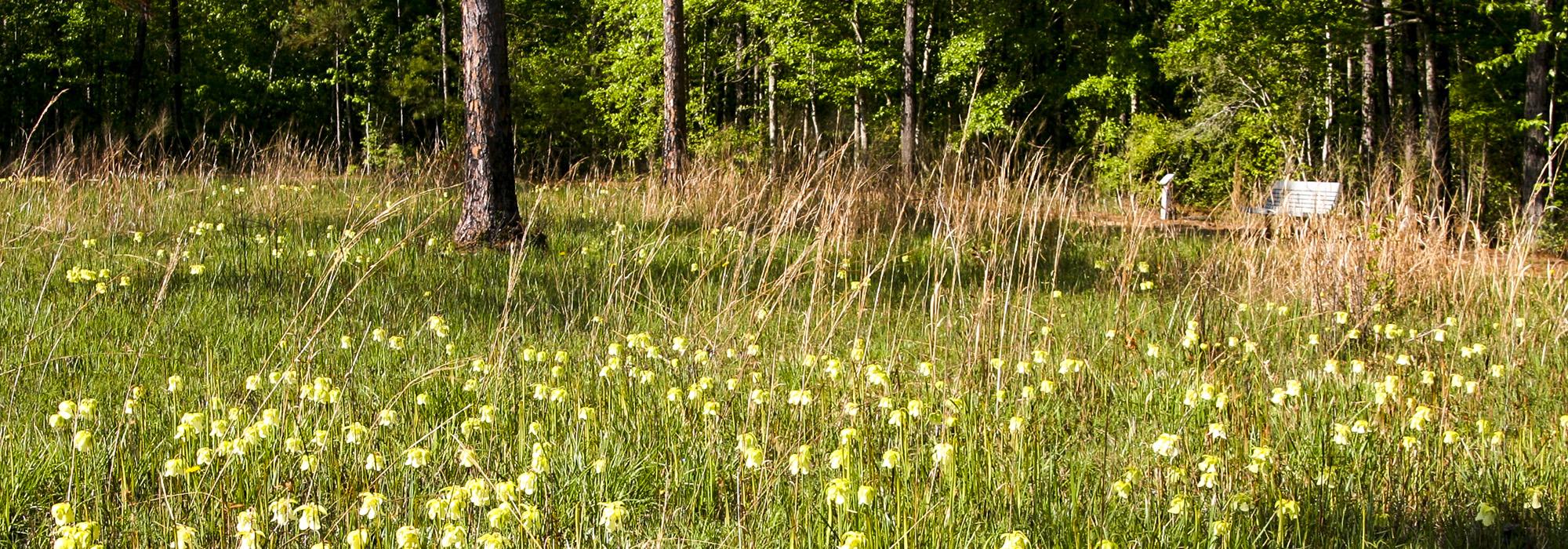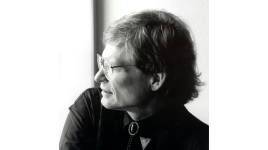Edward L. Blake, Jr. Biography
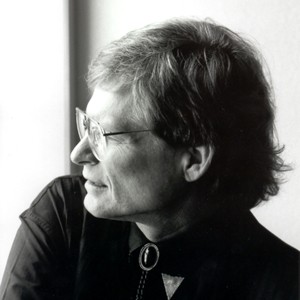
Edward L. Blake, Jr., was born in Bryn Mawr, Pennsylvania, in 1947 and grew up in Mississippi. He received his undergraduate degree in landscape architecture from Mississippi State University in 1970 as part of the third class to do so. He later became a founding principal of The Landscape Studio of Hattiesburg, Mississippi.
Blake taught at Mississippi State University from 1977 until 1984 when he became the first director of The Crosby Arboretum. His approach to understanding the arboretum was to immerse himself in a fully sensorial way. Robert Adams Ivy, Jr., FAIA wrote that “Ed has been more than the architect of Pinecote (the name for the 64-acre Interpretive Center site). He has been its chief interpreter and ambassador, translating natural phenomena to visiting professors and wide-eyed school children. He has been a resident artist, capturing the patterns of light and shadow falling across Mississippi’s humid landscape and in his drawings and works. He has been a physical presence, as strong as a longleaf pine, radiating energy and enthusiasm, committed to one special place as one man can be.”
Blake lived onsite trying to capture the essence of the Piney Woods landscape and filled notebooks with sketches and observations. Of this he wrote, “Along the way, the rewards have been many. I’ve experienced the unity, drama, and serenity of life coalescing from its mixture of opposites. I’ve marveled at our inability to make the simplest and most commonplace of things: grass, trees, and birds, and realized that this awareness is the source of my exquisite pleasure in them. From observing nature’s ability to generate dazzling complexity by endlessly varying a few common themes, I’ve chosen to honor the aesthetics of simplicity and restraint.”
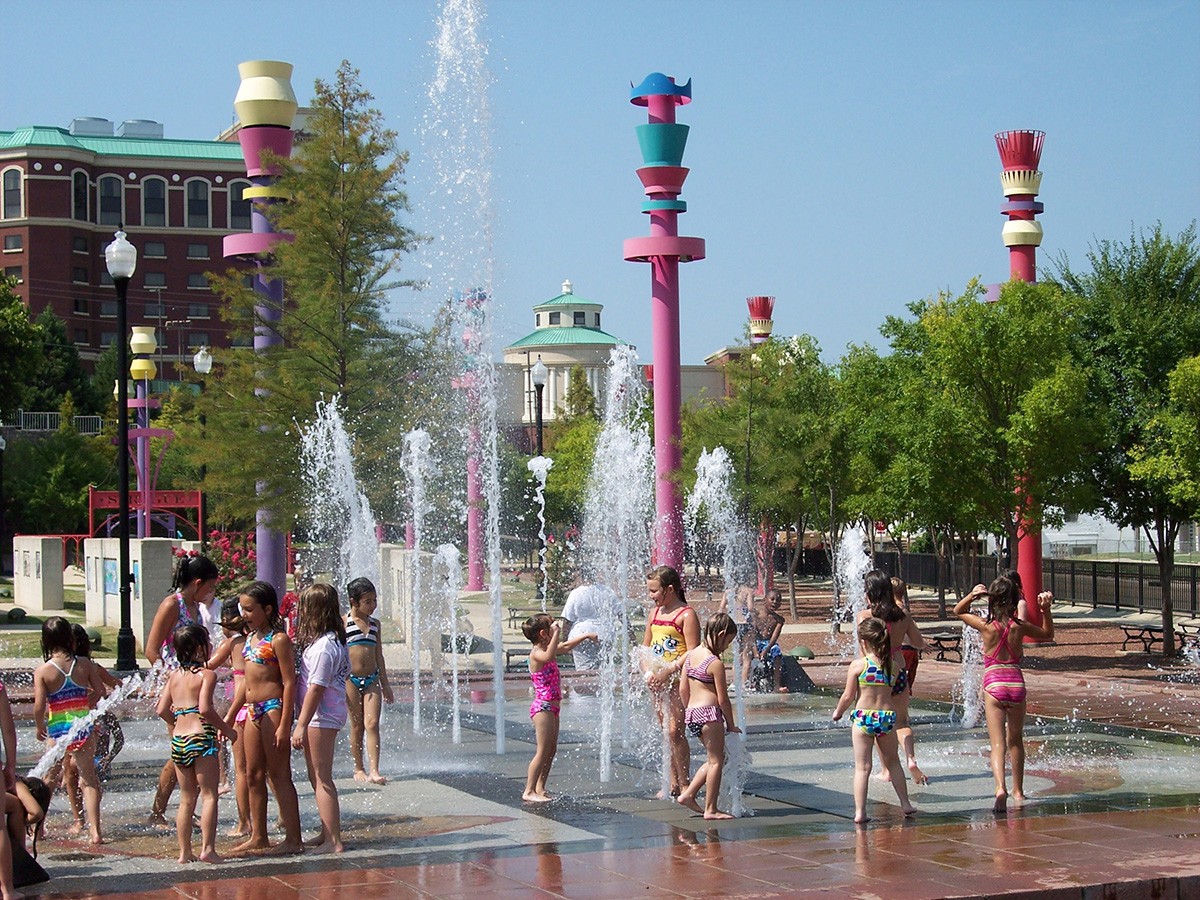
Blake was very successful at incorporating art in most of his projects. But the Art Park at Catfish Row in Vicksburg, dedicated in May 2005, went one step further by making children’s art the central feature of the design. As Blake summarized “The Art Park spatially illustrates Vicksburg’s history. It’s various areas, the historic parterre garden, the Catfish Fountain, the Interactive Arts Wall, River Lawn and Spraque Artifact, and the Levee Street Mural Promenade, each address children. Here art informs one about this unique place.”
Another recent work, 100 Acres: The Virginia B. Fairbanks Art & Nature Park hosts contemporary outdoor arts exhibits for the Indianapolis Museum of Art. The park was the focus of the PBS New Hour with Jim Lehrer on August 24, 2010, only six days before Blake’s unexpected death. Jim Lehrer began the program by stating “A Midwestern museum presents a new face of art and nature.” The report was followed by a statement that the museum has turned its attention to a park filled with exhibits -- big and small -- in an attempt to lure more visitors both inside and outside.
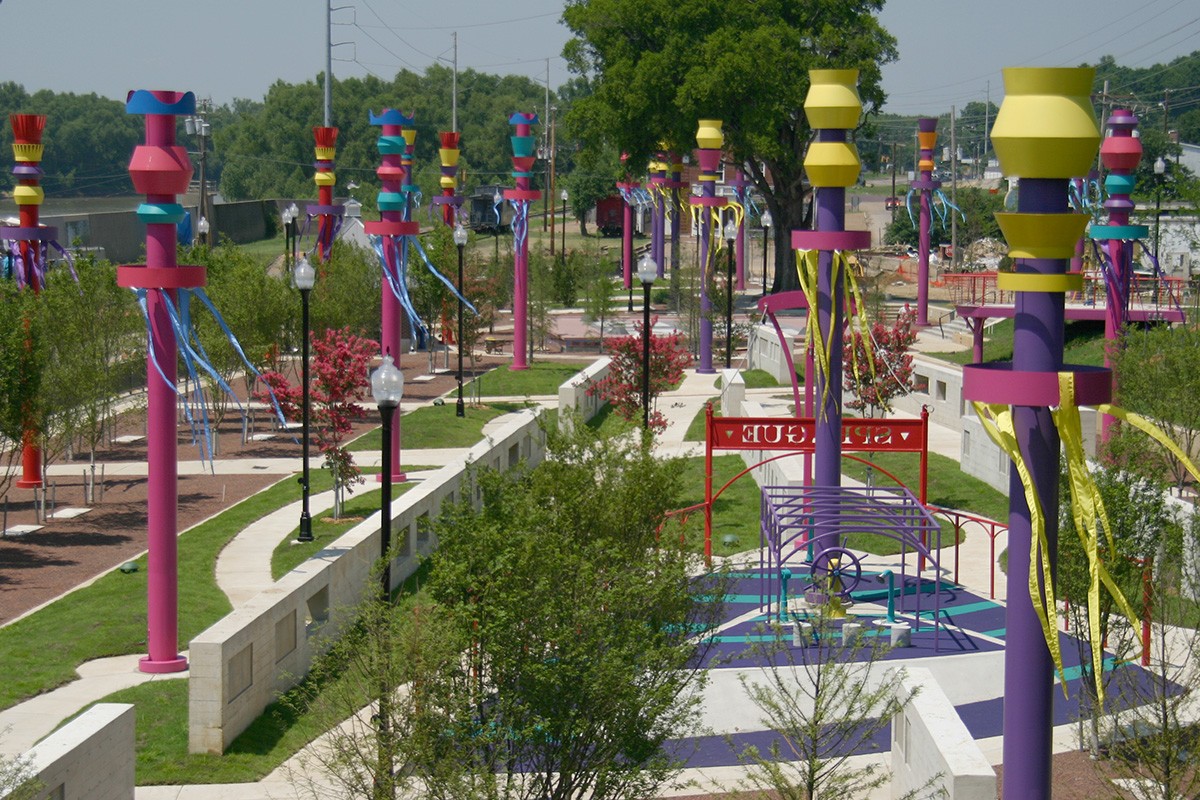
Travels to study landscapes and gardens took Blake to every state except Alaska and throughout Europe, Central and South America, and the Middle East. He was a frequent visiting design critic at Harvard University's Graduate School of Design, Auburn University, University of Arkansas and their Mexico Summer Urban Studio, Louisiana State University, Iowa State University, Mississippi State University, Tulane University and the European Landscape Education Exchange at Pontlevoy, France.
His work has been published in World of Environmental Design, 100 Years of Landscape Architecture, Landscape Architecture, Ecological Planning and Design, Weathering and Durability in Landscape Architecture, Leading Residential Landscape Professionals, and My Mississippi. Exhibits of his work include Musings: Sketchbooks and Eco-Revelatory Design: Nature Constructed/Nature Revealed.
Blake fully understood the role of the landscape architect to his medium. Blake wrote “Culturally, landscapes are portraits of human endeavor. They have recorded our thoughts and deeds as hunters, agriculturists, explorers, industrialists, and information gatherers. They inspire our sense of beauty and fuel our search for truth and utility. Biologically, landscapes are diverse communities of organic forms appropriate to their time and place. Their nature is expressive of their fitness. They contain the chemical memory of all that has worked in combining light, water, and nutrients to produce oxygen, food, and shelter: the life support system for all animated life. As art, the landscape tickles our perception of ourselves and our relation to the cosmos. As mind and spirit seek expression, the landscape is the medium through which we re-shape our shelter, the Earth. How a designer perceives these relationships determines the form of his art.”
Blake was known internationally for his work in ecological planning and design, always emphasizing the creation of environmentally sustainable designs. Practicing these “green” concepts long before they became so familiar, he was able to demonstrate with his projects that it is possible to create successful environmentally sensitive, economically feasible, artful, and socially enjoyable projects. As the founding principal of The Landscape Studio, Blake was a true gentleman and a great representative of southern landscape architects. The studio's work continues to reflect Blake’s concern for revealing through design the natural and cultural evolution of place and evolving human perceptions of specific places.
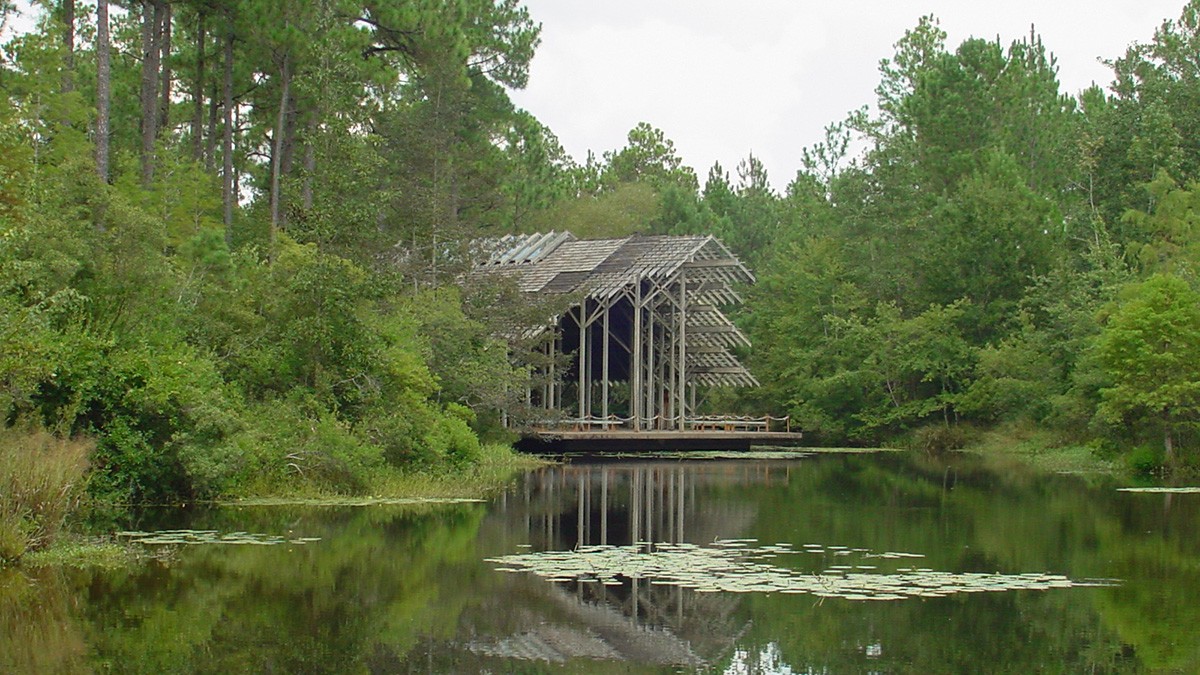
While his practice focused primarily in the southeastern and mid-western United States, his projects garnered local, regional, national, and international recognition. His designs for Hattiesburg's Lake Terrace Convention Center and The Crosby Arboretum at Picayune, both in Mississippi, received the Centennial Medallion Award commemorating the 100th anniversary of the American Society of Landscape Architects (ASLA). His work at The Crosby Arboretum, with Andropogon Associates, was given an Honor Award by the ASLA in 1991; the first national award of excellence received for a built work in Mississippi. Blake was also the recipient of ASLA's Alfred B. LaGasse Medal in 1994 for his notable contributions to the management of natural resources and public lands.
With a professional career that spanned more than three decades, Blake helped expand and re-define the boundaries within the private, academic, and non-profit arenas of landscape architecture. He passed away on August 30, 2010. He is survived by his wife Marilyn, and his sons, Benjamin and Chase.
Bibliography
Indianapolis Art Museum Looks Outdoors for a Dose of Whimsy, PBS NewsHour
Photos by Edward L. Blake, Jr.
About the Author
Sadik C. Artunç, FASLA is Professor and Head, Department of Landscape Architecture, Mississippi State University.
Robert F. Brzuszek, ASLA is Associate Professor, Department of Landscape Architecture, Mississippi State University and Former Site Director and Curator for the Crosby Arboretum, 1990- 2003.



